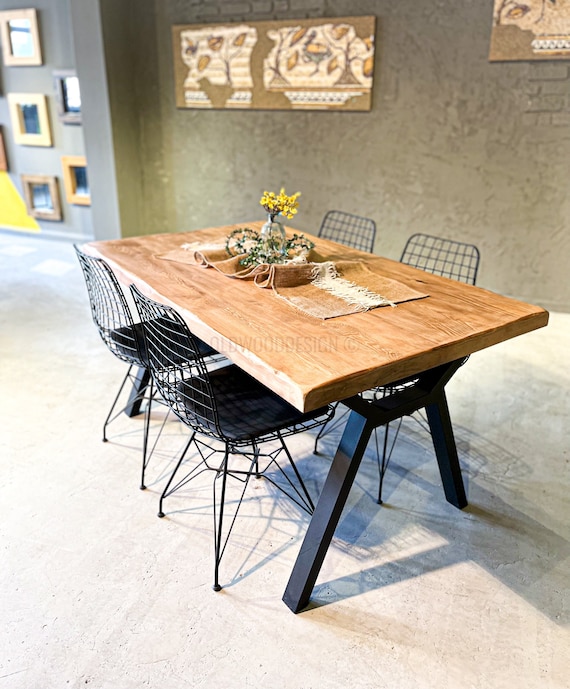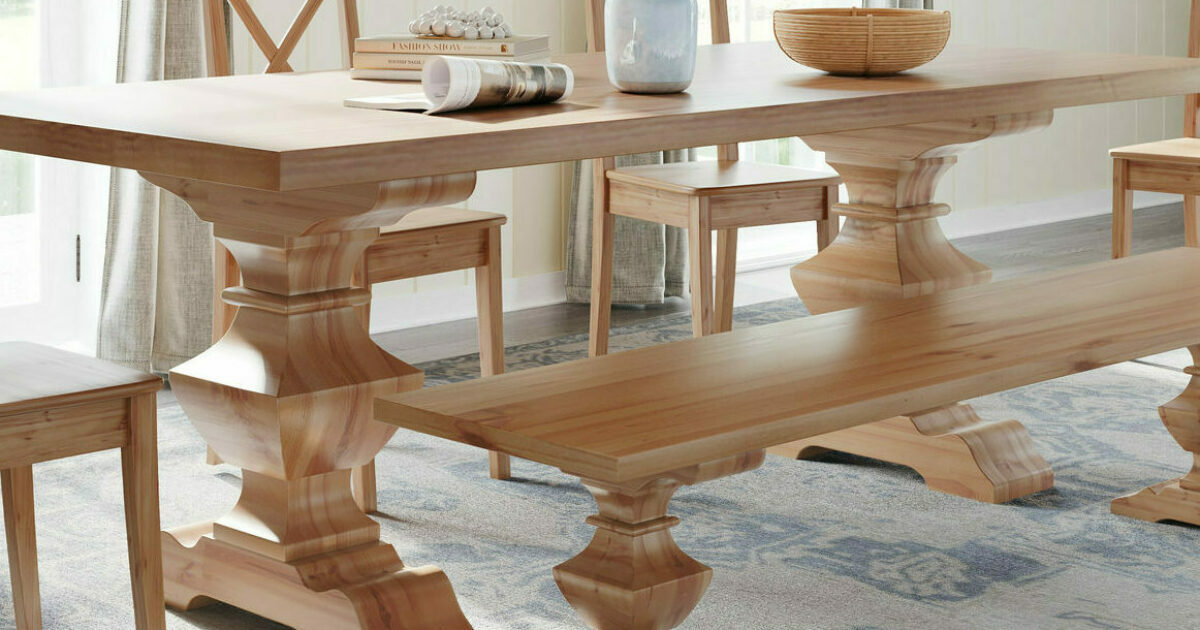Discover Artisan-Made Dining Table Legs Wood for a Customized Finish
Discover Artisan-Made Dining Table Legs Wood for a Customized Finish
Blog Article
Trick Elements to Keep in Mind for Eating Table Legs Timber Choices
When choosing timber for eating table legs, several vital aspects warrant cautious factor to consider to ensure both performance and visual appeal. The selection of timber type, identified by its durability and distinct grain patterns, plays a pivotal duty in the overall layout and durability of the piece. Additionally, one must contemplate maintenance requirements and the ecological effects of sourcing products. As these elements intertwine, they considerably influence the last outcome of your dining table. Nevertheless, recognizing the nuances of each element can be intricate, bring about important choices that merit additional exploration.
Wood Kind and Characteristics
When picking wood for dining table legs, it is vital to understand the one-of-a-kind features of various wood kinds. Different timbers supply distinct advantages and negative aspects, influencing both the toughness and aesthetic appeal of the completed product.
Hardwoods, such as maple, cherry, and oak, are generally favored for their stamina and resistance to use. Oak, recognized for its excellent toughness, additionally features a noticeable grain that can add character to the table. Maple supplies a smooth surface area and is much less vulnerable to bending, making it a dependable option for functional furnishings. Cherry wood, with its rich shade that strengthens over time, offers a lavish appearance yet may require even more maintenance to avoid scratches.
On the other hand, softwoods like pine and fir are much more cost effective and easier to deal with, yet they are less long lasting than woods. Pine is light-weight and features a warm, rustic look, making it a popular option for casual dining setups. It is extra vulnerable to scrapes and dents.
Understanding these qualities will certainly help in making an informed decision to ensure the legs of the dining table fulfill both visual and useful needs.
Grain Patterns and Visual Appeal
Picking the right grain pattern can significantly enhance the aesthetic allure of table legs. The timber's grain is not just a visual attribute; it imparts an one-of-a-kind personality and beauty to each piece. Various timber types show distinct grain patterns, ranging from the straight lines of maple to the elaborate swirls of oak and the striking figure of walnut. These patterns can stimulate numerous styles, from rustic to modern-day, making it important to pick a grain that lines up with the total style of the dining area.
Furthermore, the positioning and scale of the grain can influence the perceived dimension and elegance of the table. Bigger, a lot more noticable grains may offer a bold, significant impact, while finer, subtler grains can produce a refined, downplayed appearance. Additionally, the completing procedure can even more enhance these patterns, highlighting the all-natural elegance of the wood and drawing out rich shades.
Eventually, the choice of grain pattern should harmonize with other style aspects, such as the tabletop and surrounding furniture, making sure a cohesive visual that raises the eating experience. Thoughtful selection of wood grain not only adds to the table's charm however likewise shows the proprietor's taste and style.
Durability and Toughness
The toughness and stamina of table legs are extremely important factors to consider for making certain long life and security in any kind of dining area. Selecting the ideal wood is essential, as various varieties show varying degrees of resilience. Woods such as maple, oak, and cherry are commonly preferred for their fundamental stamina and resistance to use. These materials not just endure everyday usage but additionally sustain heavy loads, making them perfect for eating tables that often accommodate multiple restaurants. Dining Table Legs Wood.

Ultimately, purchasing high-grade wood and robust construction approaches will produce a dining table that stands the examination of time, while giving a trustworthy structure for plenty of dishes shared among family and pals. Prioritizing resilience and stamina makes certain that your table continues to be useful and cosmetically pleasing for years to find.
Upkeep and Care
Correct maintenance and treatment are essential for protecting the durability and stamina of dining table legs made from wood. Regular cleansing is important; making use of a soft, damp towel ensures that dirt and particles do not gather, which can lead to scratches and monotony. It is recommended to prevent rough chemicals or rough products that might harm the finish.
Furthermore, using an ideal timber gloss or wax regularly can help preserve the shine and protect the wood from wetness and spills. Nonetheless, it is vital to adhere to the maker's recommendations regarding the sort of product to utilize, as certain surfaces may respond negatively to particular chemicals.
Moisture and temperature fluctuations can also impact wood table legs, creating them to warp or split. It's best to put the table far from direct sunshine and warmth sources. Resolving these promptly can protect against additional damages. if the table legs have read here any kind of damages or scrapes.
Finally, periodically checking the joints and screws for rigidity is necessary to keep structural honesty (Dining Table Legs Wood). By adhering to these maintenance methods, home owners can ensure their wood table legs continue to click this be enticing and useful for several years to come
Environmental Considerations
When choosing wood for eating table legs, it's important to take ecological considerations into account. The sourcing and sustainability of wood are critical in lessening ecological effect. Selecting wood from qualified resources, such as those backed by the Woodland Stewardship Council (FSC), guarantees that the wood is collected sensibly, promoting woodland preservation and biodiversity.

In addition, local sourcing of timber lowers transport discharges, supporting regional economies while minimizing ecological influence. It is also advisable to be familiar with the timber's therapy and completing procedures, as particular chemicals can be dangerous to both human health and the environment. By focusing on sustainable wood choices, customers can contribute to ecological conservation while taking pleasure in the longevity and appeal of their eating table legs.
Conclusion
In conclusion, picking timber for dining table legs demands mindful factor to consider of numerous variables, consisting of wood kinds, grain patterns, and sturdiness. Upkeep requirements and ecological sustainability more impact wood selections, stressing the significance of sourcing from licensed or redeemed view materials.
When choosing timber for dining table legs, a number of critical variables require cautious factor to consider to guarantee both capability and aesthetic allure.Appropriate upkeep and care are essential for maintaining the resilience and stamina of dining table legs made from wood.When selecting timber for eating table legs, it's vital to take environmental factors to consider right into account. By focusing on sustainable wood options, customers can contribute to ecological preservation while taking pleasure in the longevity and elegance of their dining table legs.
In final thought, picking timber for dining table legs necessitates cautious consideration of numerous aspects, consisting of wood types, grain patterns, and toughness. Dining Table Legs Wood.
Report this page